Introduction
Understanding the early signs of autism in toddlers is crucial for their development and overall well-being. Timely intervention has a profound impact on children with autism, enhancing their growth and opening up new avenues for support. Recent research highlights the variability in how autism presents itself, emphasizing the need for careful observation and understanding of each child's behavior.
Innovative technologies, such as AI-driven models, are emerging as invaluable tools in early detection, demonstrating high success rates in identifying children with autism. However, disparities in the effectiveness of traditional screening methods have been noted, particularly in real-world primary care settings, highlighting the need for more accurate and universally accessible screening tools. Organizations like The Autism Community in Action (TACA) are working tirelessly to support families and advocate for the availability of early treatment options.
By boosting public awareness and providing clear recommendations for support, we can make significant strides in supporting children with autism. The goal is to ensure that every child receives high-quality, individualized programming and the opportunity to be included in early childhood programs, setting them on a path to success from the start.
Why Early Recognition is Crucial
Understanding the early signs of autism in toddlers is not just important, it's transformative for their development and overall quality of life. Timely intervention has a profound impact on children with autism, enhancing their growth and opening up new avenues for support. The key is to recognize these signs as soon as possible, allowing parents to secure the right care and resources that can help their children flourish.
Recent research underscores the variability in how autism presents itself, making it clear that there's no one-size-fits-all approach to diagnosis. It requires careful observation and a deep understanding of each child's behavior. Innovative technologies, such as AI, are now emerging as invaluable tools in this endeavor.
For instance, a new AI-driven model, AutMedAI, demonstrates an 80% success rate in identifying children with autism, highlighting the potential of technology to revolutionize early detection.
Despite the high specificity of traditional screening methods, like the M-CHAT-R/F, disparities in their effectiveness have been noted, especially in real-world primary care settings. These disparities can delay diagnosis for girls and children of color, emphasizing the need for more accurate and universally accessible screening tools. Such tools could not only improve screening accuracy but also ensure that early intervention services are more readily available to those in need.
Organizations like The Autism Community in Action (TACA) are working tirelessly to support families and advocate for the availability of early treatment options, such as behavioral therapy. Recognizing the substantial difference early intervention can make, the echo the sentiment that with accurate and early diagnosis, the journey to support and improvement can begin much sooner.
In light of these insights, it's evident that setting the stage for inclusion from the earliest age is crucial. By boosting public awareness and providing clear recommendations for support, we can make significant strides in supporting children with autism. The goal is to ensure that every child receives high-quality, individualized programming and the opportunity to be included in early childhood programs, setting them on a path to success from the start.
Social-Communication Challenges in Toddlers
Social communication is a core challenge faced by toddlers on the autism spectrum. These young individuals may find it tough to start or sustain social interactions, make eye contact, or interpret body language. By deepening our understanding of these difficulties, we can better appreciate the diverse ways in which autistic individuals process information and communicate.
For example, while some may use visual aids like the Picture Exchange Communication System (PECS), others might prefer typing to verbal expression.
Recent studies emphasize the importance of addressing social communication early on. Joint attention, which refers to shared focus on an object or activity, is a critical element of preverbal communication and is often a target in interventions. It's the foundation upon which language skills are developed.
Through interventions that focus on joint attention, toddlers are given a reason to communicate, paving the way for the development of verbal skills.
Incorporating strategies that play to the strengths of autistic individuals is key. Whether it's providing clear, direct communication or introducing structured questions to encourage conversation, these approaches are tailored to the individual's unique needs and can significantly enhance social interactions. Moreover, involving parents in the learning process is crucial.
By equipping parents with an understanding of both the targeted social outcomes and the intervention processes, they can seamlessly integrate these strategies into daily life, which benefits the child's ongoing social development.
This personalized approach to learning is backed by a shift in research methodologies, with randomized controlled trials becoming more prevalent in assessing the effectiveness of interventions. Such research is vital in helping clinicians select the most effective treatments and providing evidence-based support to families navigating autism's unique challenges.
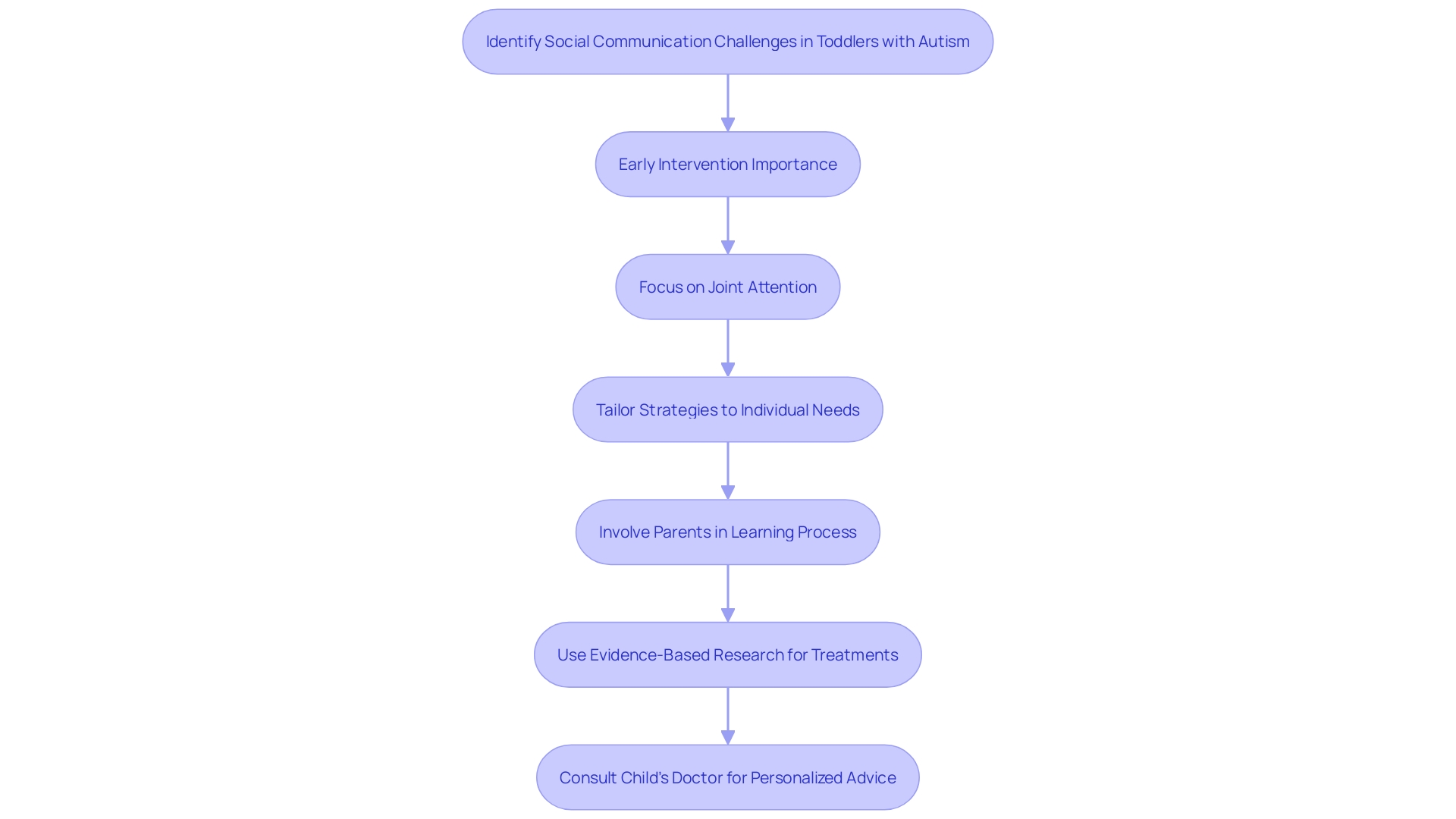
Early Signs of Autism: Communication Differences
Toddlers on the autism spectrum often exhibit communication differences that can be key indicators of their condition. These may manifest as delayed speech or language skills, a limited range of vocabulary, challenges with understanding and utilizing gestures effectively, and a tendency to repeat words or phrases known as echolalia. Early detection of these signs is crucial as it can lead parents to seek prompt intervention, such as speech therapy, which can significantly aid in their child's development.
Research emphasizes the importance of understanding the unique ways in which children with autism process information, from nonverbal cues to sensory inputs, and stresses that appreciating these differences is the first step toward fostering better communication.
To support these children, a variety of techniques can be beneficial. Augmentative and alternative communication methods, including the Picture Exchange Communication System (PECS), photos, gestures, or visual aids, can be immensely helpful for children with limited verbal language. Others might find it easier to type rather than speak, or benefit from structured questions that can help them initiate and carry on conversations.
The intervention that focuses on preverbal social communication, such as joint attention, is integral since it lays the groundwork for verbal communication and is tied to future language competence.
Moreover, computational models have demonstrated that understanding a child's communication relies heavily on the context of past interactions. Adults in tune with the child's communication style are more adept at deciphering these early attempts at speech, which often start with simple syllables and develop into more complex expressions.
Despite the availability of screening tools like the Modified Checklist for Autism in Toddlers-Revised with Follow-Up (M-CHAT-R/F), there is an ongoing need for more accurate and objective screening methods to enhance early diagnosis and intervention. Such efforts are vital for improving outcomes and reducing disparities in access to care, as studies indicate the current tools do not always perform consistently across different populations and settings.
It is essential for caregivers to stay informed about new developments in treatments and approaches, critically evaluating the wealth of information available, especially online. In doing so, they can make informed decisions about their child's care, discerning between potential benefits and risks. Ultimately, embracing the unique challenges and strengths of children with autism can lead to a more informed, supportive, and enriching environment for their growth and learning.
Behavioral and Repetitive Patterns
Understanding the behavioral patterns of toddlers can be crucial in recognizing the early signs of autism spectrum disorder (ASD). Repetitive behaviors, such as hand-flapping, spinning objects, or meticulously lining up toys, are often key indicators. These actions go beyond mere play.
They can signal a child's intense interests and a proclivity for repetitive play. Such behaviors are not just quirks but may be restricted and repetitive behaviors (RRBs) that are symptomatic of ASD.
RRBs are considered a natural part of development, aiding in neural development and voluntary motor control from the first year of life, as well as mastery and emotional development in the second year. Yet, when these behaviors persist beyond the time they typically recede, they can be indicative of developmental delays or neurodevelopmental conditions, including ASD.
A child's repetitive interests and behaviors can be one of the earliest signs for parents to observe and report to healthcare providers. It's important to note that while parents' observations are invaluable, professional evaluation is key. Specialists such as neurodevelopmental pediatricians or child neurologists may conduct further assessments using criteria from the DSM-5 and tools like the ADI-R, focusing on social interaction, communication, and behavior.
Recent advancements in research have led to the development of machine-learning models like 'AutMedAI', which can identify children with autism by analyzing various parameters, such as the age of the first smile or the presence of eating difficulties, before the child turns two. These tools aim to improve the accuracy of early autism detection, which is vital for timely intervention.
In summary, recognizing repetitive patterns in a toddler's behavior can be an early window into identifying ASD. It's a fine balance of observing natural developmental behaviors while being vigilant for signs that might warrant professional evaluation. By doing so, parents and caregivers can help ensure that children get the support they need as early as possible.
Key Milestones to Monitor
Recognizing the early signs of Autism Spectrum Disorder (ASD) in young children is crucial for timely intervention. Typically developing toddlers usually begin to engage in social behaviors such as babbling, pointing, waving, and responding to their name within the first few years of life. However, if a child exhibits delays in these developmental milestones, it may be an indicator of ASD.
This underscores the importance of parents and caregivers monitoring developmental progress and consulting with healthcare professionals promptly if they notice any concerns.
Researchers have found that early identification of ASD can lead to early intervention, which significantly improves outcomes. A case study, published in the Journal of Personalized Medicine, highlighted the success of an individualized, multidisciplinary approach in reducing the severity of ASD symptoms in 4-year-old dizygotic twins. These twins were diagnosed with level 3 severity ASD, necessitating substantial support.
In addition, a machine-learning model known as AutMedAI has demonstrated the ability to identify around 80% of children with autism by analyzing 28 different parameters, including those observable without extensive assessments before 24 months of age. This model was developed from a study using a large database of individuals with and without ASD, showcasing the potential for technology-enhanced early screening.
Supporting these findings, the Bucharest Early Intervention Project revealed the profound impact of early life experiences on cognitive development. The study provided insights into the effects of early intervention by assessing children who were moved from institutions to foster homes, compared to those who remained in institutional care.
Consistent with the American Academy of Pediatrics' recommendation for a family-centered medical home, developmental monitoring should be part of a comprehensive, coordinated approach to healthcare. This includes identifying children with special healthcare needs, integrating feedback from early childhood providers, and coordinating with specialists for further evaluation.
The statutory Early Years Foundation Stage (EYFS) framework in the UK also emphasizes the importance of assessing children's development against specific learning goals. The EYFS Profile aids in supporting the transition into formal education by providing a clear picture of each child's developmental stage.
Lastly, a report examining school readiness from the perspectives of both teachers and parents underscores the importance of parental awareness and engagement in preparing children for the transition to school. This kind of parental involvement is essential for fostering a supportive environment for children who may be at risk for or diagnosed with ASD.
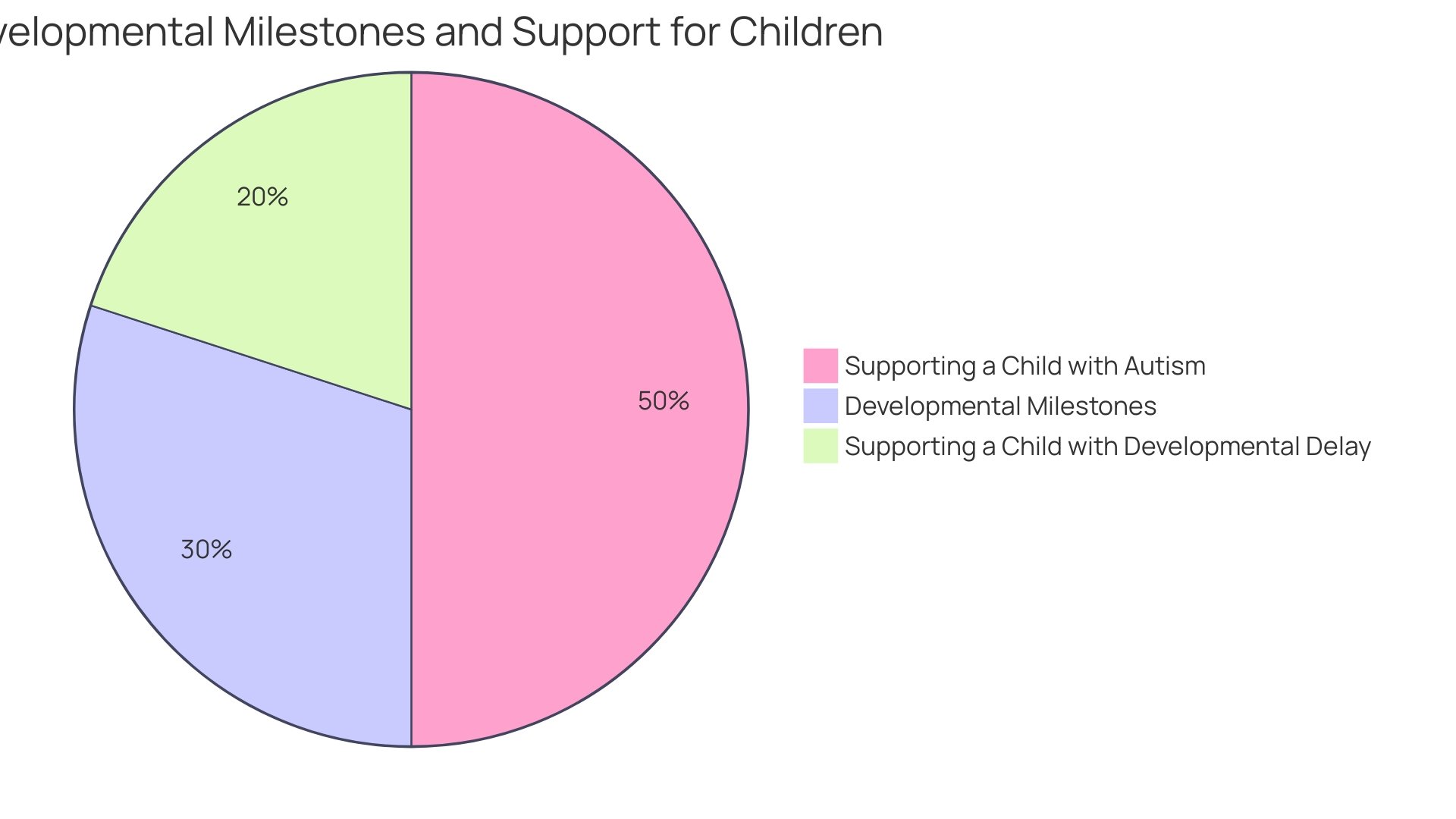
Red Flags in Infancy (0-12 Months)
The early detection of autism spectrum disorder (ASD) is critical, with signs potentially emerging in infancy. Parents may notice their child exhibiting certain behaviors like limited eye contact, indifference to being called by name, delays in babbling or gesturing, and an apparent disinterest in engaging with others socially. These early indicators, or 'red flags', are crucial for early intervention.
Research, including a notable study published in the Journal of Personalized Medicine, emphasizes the importance of recognizing these signs to seek timely evaluations and personalized interventions. Supported by evidence from similar cases, the study highlighted the success of non-pharmacological, individualized approaches in reducing ASD symptom severity in children requiring substantial support, such as the case of 4-year-old fraternal twins diagnosed around twenty months of age. Beth Lambert, a study author and founder of Epidemic Answers, sheds light on the potential for reversing ASD symptoms and providing parents with resources and support.
The urgency of early ASD detection is echoed by organizations such as The Autism Community in Action (TACA), which aids families in navigating the diagnostic process, and companies like NeuroQure, working to make early diagnosis a reality. To support children with developmental delays or ASD, resources such as public awareness campaigns and global programs offer tips to enhance cognitive and vocabulary skills, while the UK's National Health Service suggests communication aids and seeking professional help when needed. It's important to employ simple language, clear speech, and tools like Makaton or the Picture Exchange Communication System to foster understanding and connection with the child.
These collective efforts underscore the significance of early identification and tailored support for children with ASD.
Red Flags in Toddlerhood (12-36 Months)
As young children navigate through their early years, the term 'toddler'—stemming from 'toddle', meaning to walk with unsteady steps—aptly describes this stage of development. During this period, marked by significant milestones, parents may observe certain behaviors that deviate from typical development, signaling the need for closer attention.
Repetitive actions, challenges with adapting to new routines, a narrow scope of interests, and an absence of imaginative play are potential indicators of developmental concerns. These 'red flags' are vital for parents to recognize as they may suggest the possibility of a learning disorder or autism, conditions which might only become evident as the child grows older and faces the structured learning environment of school.
Learning disorders are characterized by a discrepancy between a child's expected developmental abilities and their actual performance in specific academic areas such as reading or mathematics. Autism, on the other hand, can manifest through social, behavioral, and communication differences.
It's important to consider a child's pace of development, as some may simply need more time to reach certain milestones. However, persistent difficulties in certain areas, contrasted with typical development in others, warrant professional evaluation.
Parents should also be mindful of their own actions, ensuring they do not inadvertently prevent their child's learning and development, as highlighted by 'The Test of Four'. This includes assessing whether their involvement is impeding the child from acquiring skills that foster growth.
The implications of early identification and intervention are profound. For instance, the Bucharest Early Intervention Project demonstrated the positive impact of placing institutionalized children into foster care on cognitive development, emphasizing the role of early environment in shaping a child's future.
Furthermore, research underscores the importance of fostering independence in children, linking it to self-confidence, resilience, and mental well-being. As such, recognizing and responding to developmental red flags is not only about addressing immediate concerns but also about supporting the child's long-term health and autonomy.
Importance of Gestures in Communication
Hand gestures are an essential component of communication that go hand-in-hand with spoken language. These gestures, known as iconic gestures, visually represent information that is directly related to speech, such as the size, shape, or motion of a referent, enriching the content and facilitating understanding. In adults, this integration of gesture and speech is a sophisticated process that enhances clarity, particularly in challenging listening environments.
However, for toddlers, especially those on the autism spectrum, the development and use of these gestures can be significantly impaired. They may struggle with not only interpreting but also producing common gestures like pointing or waving, which are foundational to early nonverbal communication. This gap in gestural communication is a critical indicator for parents and caregivers to identify early on.
As illustrated by Susan Goldin-Meadow's work with children who create their own gestures, these physical movements are more than mere accompaniments to words; they are a powerful mode of expression in their own right. Therefore, understanding the absence or delay of gestures in children with autism is a pivotal step toward early intervention. Speech therapy and other supportive measures can then be introduced to nurture communication skills, bolstering the child's ability to express themselves and engage with the world around them.
Avoidance of Eye Contact and Social Interaction
From the earliest moments of life, babies are equipped with a sophisticated attentional system designed to tune into the presence of others. This natural inclination towards social stimuli, such as faces and movement, is not only fascinating but also lays the groundwork for future social interactions and development. However, for children with autism spectrum disorders (ASD), this instinctual social attention may be disrupted, leading to a different trajectory of social skills development.
Research indicates that children with ASD may develop distinct attentional preferences, demonstrating a unique pattern of focusing on non-social stimuli, such as textures or geometric shapes, rather than on faces or social interactions. These findings underscore the importance of early interventions tailored to enhance social attention, which could potentially align the developmental paths of children with autism closer to those of their typically developing peers, fostering individualized support strategies. Experts emphasize the need for accurate, effective, and accessible autism screening tools, as early diagnosis and intervention can significantly improve outcomes.
Current screening methods, like the Modified Checklist for Autism in Toddlers-Revised with Follow-Up (M-CHAT-R/F), have shown variability in accuracy, particularly in real-world settings and among diverse populations. The push for objective and scalable diagnostic tools is crucial to bridge these gaps, with technologies like eye-tracking offering promising insights into the emergence and maturation of autism in early childhood.
Lack of Response to Names and Sounds
When toddlers seem indifferent to auditory stimuli such as their name being called or reacting to familiar voices, it could signify a divergence in their auditory processing, a trait sometimes observed in children with autism. This early sign is not just about hearing but about understanding and responding to auditory cues in the environment. It's essential to recognize that while some children may simply be engrossed in play or momentarily distracted, a consistent lack of reaction could warrant further evaluation.
In-depth studies, including the Bucharest Early Intervention Project, have underscored the profound impact early interventions can have on a child's developmental trajectory. The project, which began in post-communist Romania, revealed the cognitive benefits children experienced when moved from institutional settings to family environments. Such findings emphasize the importance of early and supportive environments for children displaying signs of developmental differences.
Moreover, research has shown that the sounds and words children hear and the context in which they hear them play a crucial role in their language development. For instance, computational models have demonstrated that predictions about a child's speech were more accurate when previous conversations with caregivers were taken into account, as highlighted by associate professor Elika Bergelson from Harvard.
Understanding the nuances of a child's response to their name or sounds not only guides parents toward seeking professional advice but also illuminates the importance of context in language acquisition. This knowledge, derived from studies such as the one by Bergelson and her team, shows that language learning is an intricate dance between caregiver interactions, the child's perception, and the environment they are nurtured in.
As we navigate the early stages of a child's life, observations of their reactions—or lack thereof—can be powerful indicators prompting us to provide the resources and support necessary for their flourishing development. Identifying these early signs and understanding their implications through a lens of well-researched knowledge can lead to timely and effective interventions that support a child's communication and social skills, ultimately enhancing the quality of life for both the child and their family.
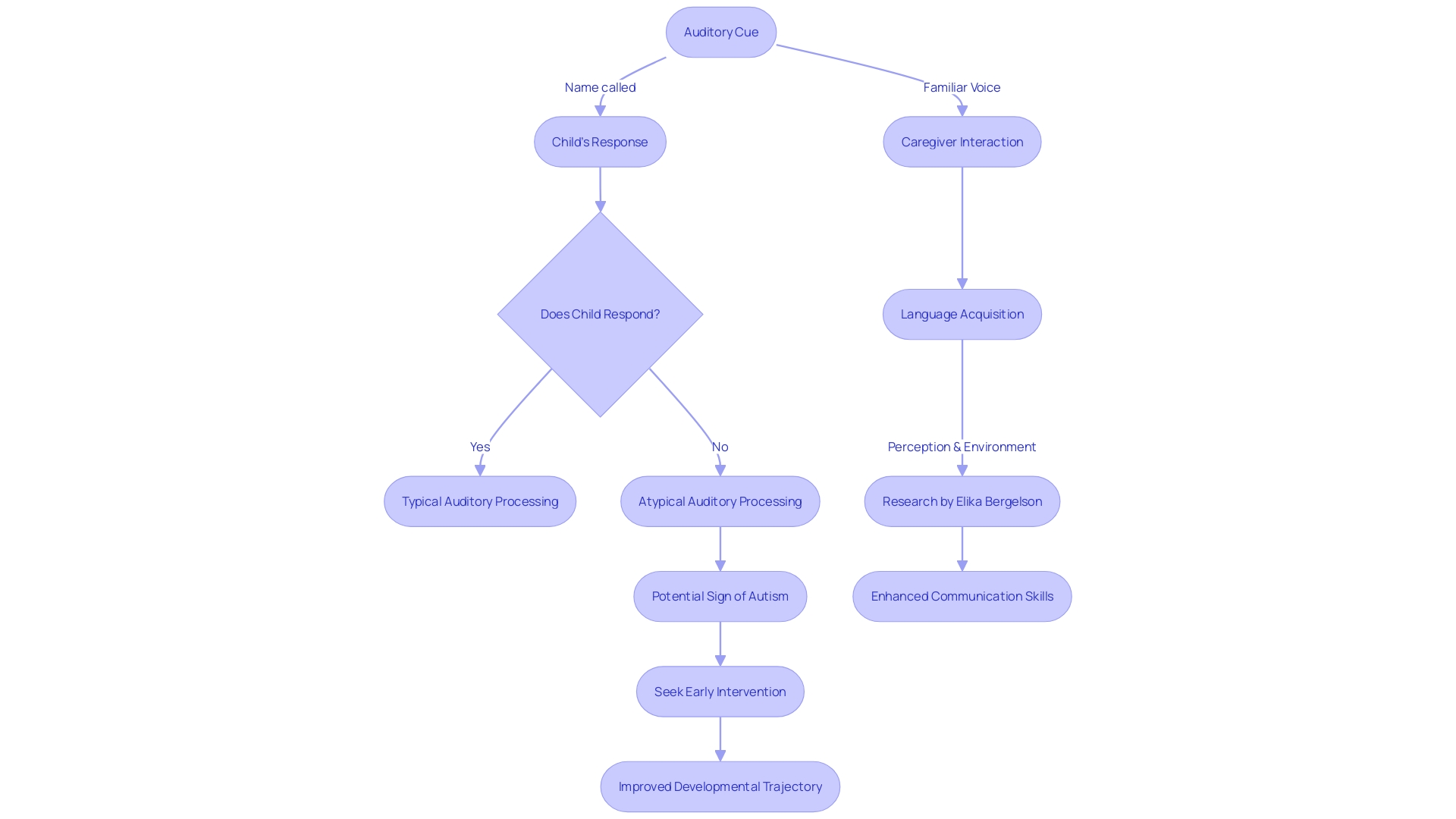
Repetitive and Restricted Behaviors
Observing repetitive and restricted behaviors (RRBs) is crucial in understanding autism spectrum disorders (ASD). These behaviors might include actions like repetitive movements, inflexible adherence to routines, narrowly focused interests, and challenges with changes in activities. As children with ASD might also be more susceptible to medical issues like gastrointestinal distress, it is essential that these behaviors are not dismissed simply as quirks but are recognized as potential indicators of autism.
This recognition can lead parents and caregivers to seek further evaluation and suitable interventions, which can greatly aid a child's developmental journey.
Medical professionals use tools such as the Modified Checklist for Autism in Toddlers-Revised (M-CHAT-R/F) during critical developmental checkups to assess for autism. However, the M-CHAT-R/F's effectiveness varies in different settings, and follow-up can sometimes be inconsistent, highlighting the need for more precise and universally accessible screening methods. For instance, studies have shown that while the M-CHAT-R/F is highly specific, its sensitivity and positive predictive value may be less optimal, which may delay diagnosis and intervention for some children.
It's important to understand that RRBs are not exclusively associated with ASD but can also be part of typical development. These behaviors play a role in neural, motor, and emotional development, especially during early childhood. However, when such behaviors persist beyond developmentally appropriate periods, they might signal underlying neurodevelopmental conditions, including ASD, attention deficit and hyperactivity disorder (ADHD), or obsessive-compulsive disorders (OCD).
Research has also examined the complex nature of RRBs, suggesting that for individuals with ASD, these behaviors may serve a functional role, such as reducing anxiety or coping with sensory processing differences. Empirical studies and analysis of physiological effects of RRBs support the idea that they can help calm the nervous system.
In light of these complexities, it is essential for parents to note the presence and persistence of RRBs in their children and consider them alongside other medical and behavioral information. This holistic understanding, coupled with an early and accurate diagnosis, can unlock vital resources to support children with ASD in living full and enriched lives.
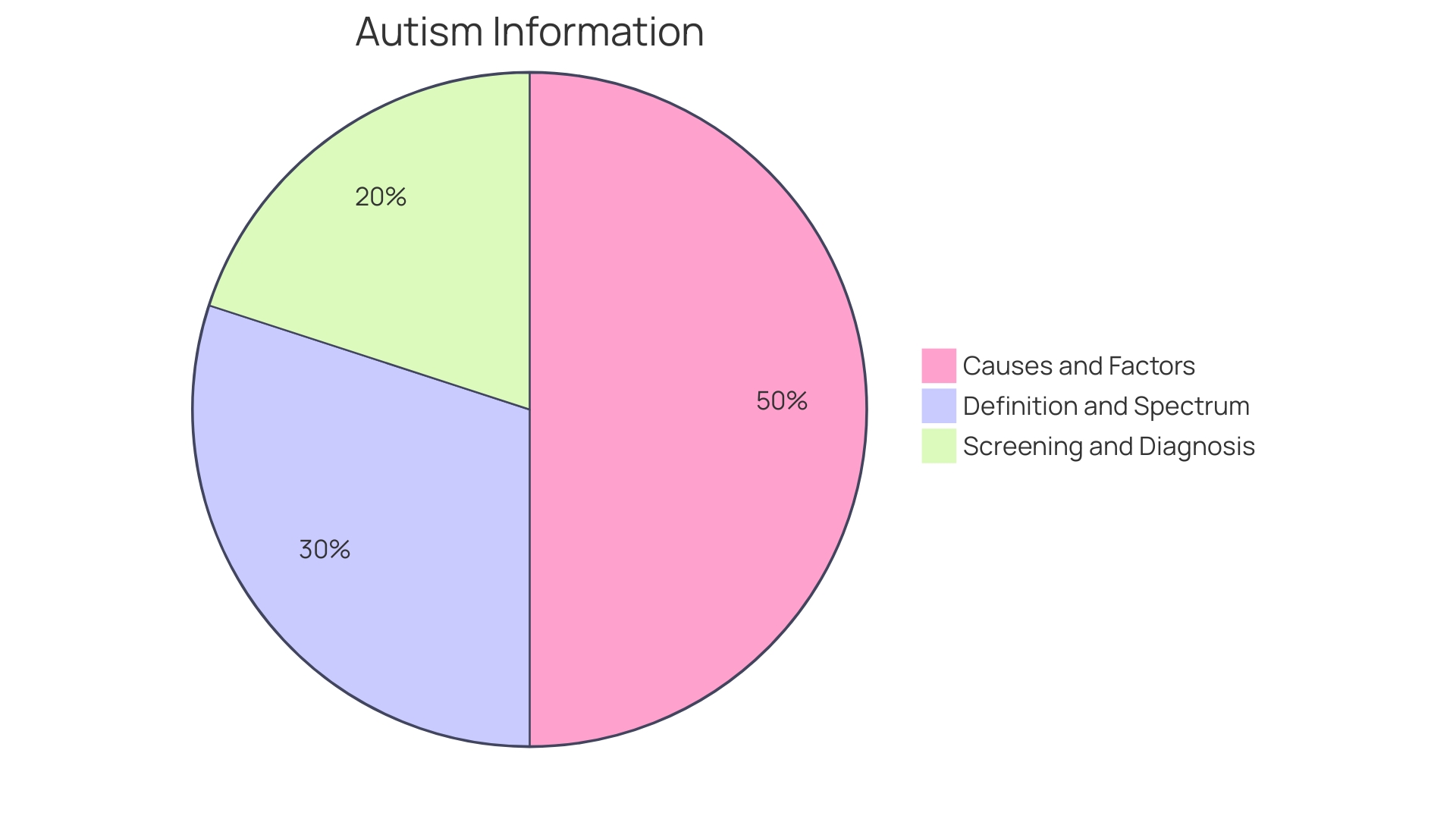
Screening and Diagnostic Tools
Parents and professionals alike recognize the importance of early detection and intervention when it comes to autism spectrum disorder (ASD) in toddlers. By leveraging diagnostic tools like the M-CHAT or ADOS, a more comprehensive understanding of a child's behavioral patterns and developmental milestones can be achieved. These assessments combine caregiver insights with professional observations, adhering to the criteria established by the American Psychiatric Association's DSM-5.
Yet, it's imperative to understand that no single tool offers a definitive diagnosis on its own. Innovative approaches such as the SenseToKnow app are enhancing diagnostic capabilities by analyzing a range of behaviors including eye movement, facial expressions, and motor skills, which are indicative of autism. These advancements underscore the necessity for multi-faceted assessment tools that capture the diversity and complexity of ASD.
Emerging research and technology offer promising avenues for earlier and more accurate diagnoses, ultimately leading to timely interventions that can significantly improve outcomes for children with ASD. This aligns with the insights from Geraldine Dawson of the Duke Center for Autism and Brain Development, who emphasizes the variability found in autism. Furthermore, organizations like RTI International and The Autism Community in Action (TACA) are at the forefront of advocating for and implementing such tools, ensuring that families have access to the support and resources they need to navigate the journey of ASD diagnosis and treatment.
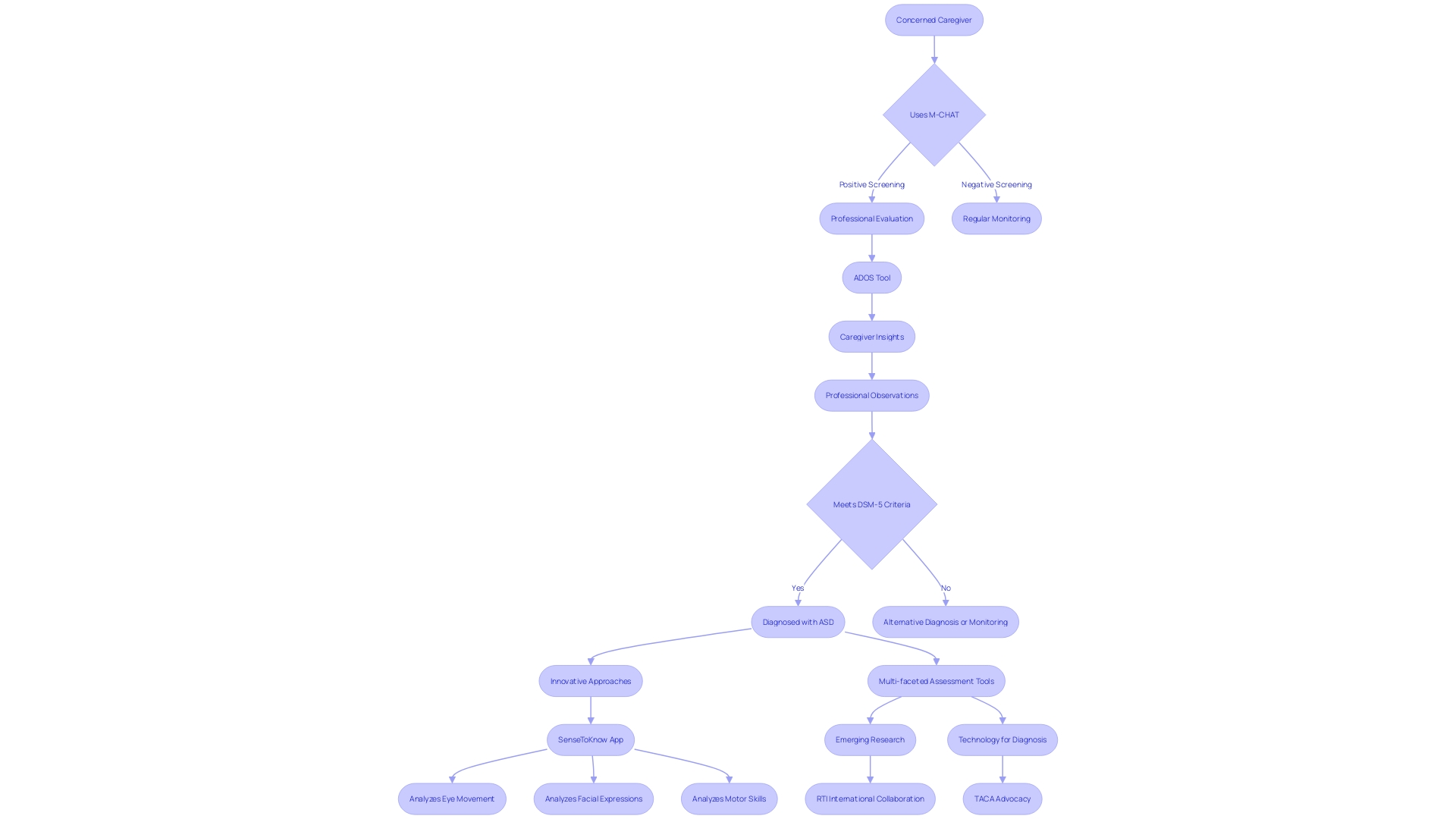
Steps to Take if You Suspect Early Signs of Autism
When early signs of autism are observed in young children, timely and proactive action is crucial. Engaging with a pediatric healthcare provider to discuss these observations and possibly obtain referrals to specialists such as developmental pediatricians or child psychologists is a vital first step. These professionals can offer in-depth insights and can chart a course for necessary interventions.
Early intervention services are pivotal in nurturing a child's growth, especially when addressing speech or language delays, which are often among the first indicators of developmental challenges. The US Preventive Services Task Force emphasizes the importance of identifying and treating primary speech and language delays in children who show no other conditions that may cause such impairments.
The science behind early intervention, including therapies like speech and occupational therapy, is solid. For instance, the Bucharest Early Intervention Project demonstrated the profound impact nurturing environments have on cognitive development. This research underscores the critical nature of early and appropriate interventions for children's mental health and overall well-being.
As Dr. Nathan A Fox, a key expert from the University of Maryland, involved in the project, indicates, the care provided in the early stages of a child's life can have long-lasting effects on their IQ and social participation. In line with Dr. David (Dan) R. Offord's belief in equity and support for all children, including those with disabilities, these interventions align with the goal of creating a 'fair race' for every child's developmental journey.
Moreover, advancements in machine learning, as seen with the development of the 'AutMedAI' model by researchers at Karolinska Institutet, highlight the potential for early and more precise identification of autism in children. This approach, which uses a combination of parameters easily obtained before 24 months of age, points to the future of personalized and timely interventions for children on the autism spectrum.
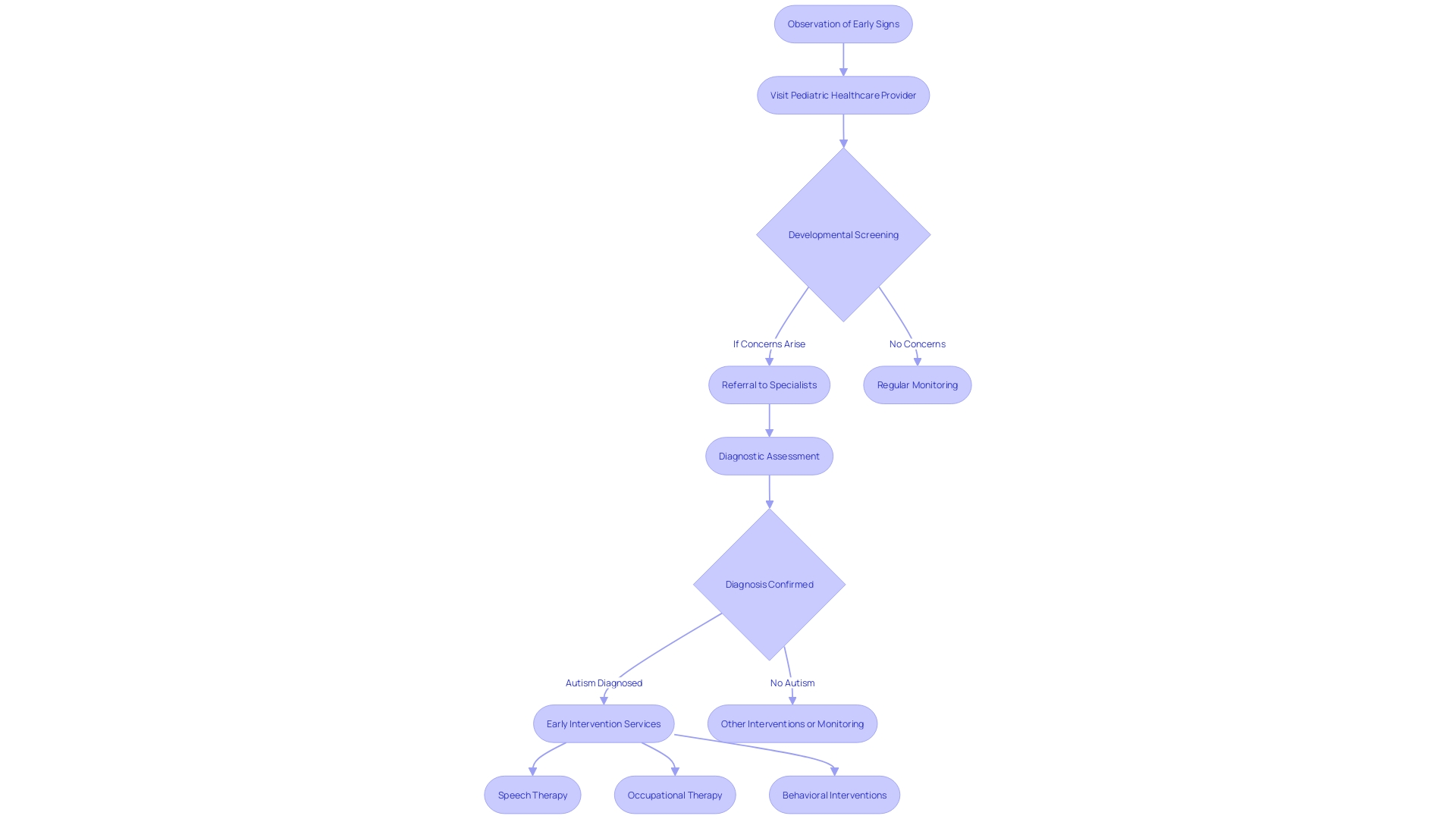
Benefits of Early Diagnosis and Intervention
The importance of early diagnosis and intervention in children with autism cannot be overstated. When autism is identified at a young age, it sets the stage for timely access to tailored interventions, which can significantly enhance a child's language and social skills. The ripple effects of early action are profound, leading to more favorable long-term outcomes and an overall improved quality of life.
Children, like Aries, who faced a multitude of challenges as a premature baby, have shown us that with early intervention, the limitations set by even the most serious diagnoses can be overcome. His story of defying the odds by walking and communicating, thanks to innovative treatments like the brain cap developed by Dr. Manish Shah's team, demonstrates the transformative power of early support.
Research underscores the critical nature of early intervention. For instance, a study from Child of the North and the Centre for Young Lives highlights an autism assessment crisis. It emphasizes the need for a more proactive, needs-led approach over the traditional diagnosis-led system, advocating for early identification to enable swift and effective support without the delays of obtaining a formal diagnosis.
This shift in paradigm could significantly reduce the risk of associated conditions such as mental health issues and lower the likelihood of school exclusion.
The journey from understanding the risk factors to recognizing the initial symptoms of autism is complex, involving a dynamic interaction between genetic and environmental influences. Naviaux's research into these governing dynamics reaffirms the value of early diagnosis in opening doors to early intervention and the best possible outcomes. The developmental milestones of a child, from social and emotional skills to cognitive and physical abilities, serve as critical checkpoints.
By closely monitoring these milestones, parents and caregivers can identify deviations that may signal autism, thus beginning the journey toward support and growth at the earliest stage possible.

Challenges and Considerations in Early Diagnosis
Understanding the journey to an autism diagnosis can be complex. Families often experience prolonged waiting periods; some reports indicate that getting a diagnosis of autism spectrum disorder (ASD) or ADHD can take anywhere from three to four-and-a-half years. This delay is even more pronounced for females, who tend to wait longer for an autism diagnosis than males, especially if they also have ADHD.
Such findings underscore the need for timely support and interventions.
Recent advancements in machine learning models, like AutMedAI, show promise in identifying children with autism with about 80% accuracy using non-invasive parameters. This technology could revolutionize early detection, allowing for interventions at a younger age, which is crucial because early diagnosis is linked to better outcomes. However, this does not diminish the importance of caregivers staying informed about the latest research and treatments.
This due diligence includes a critical assessment of the myriad of internet resources and potential treatments, distinguishing credible information from misleading claims.
The importance of early diagnosis is highlighted by the fact that only 10-20 percent of individuals diagnosed with ASD before the age of five are expected to live independently as adults. With the understanding that autism is influenced by both genetic and environmental factors, researchers are continually examining how these variables interact to manifest ASD. This ongoing research is vital, as early and accurate diagnosis can greatly enhance the standard of living for individuals with ASD and their families, paving the way for early and effective support.
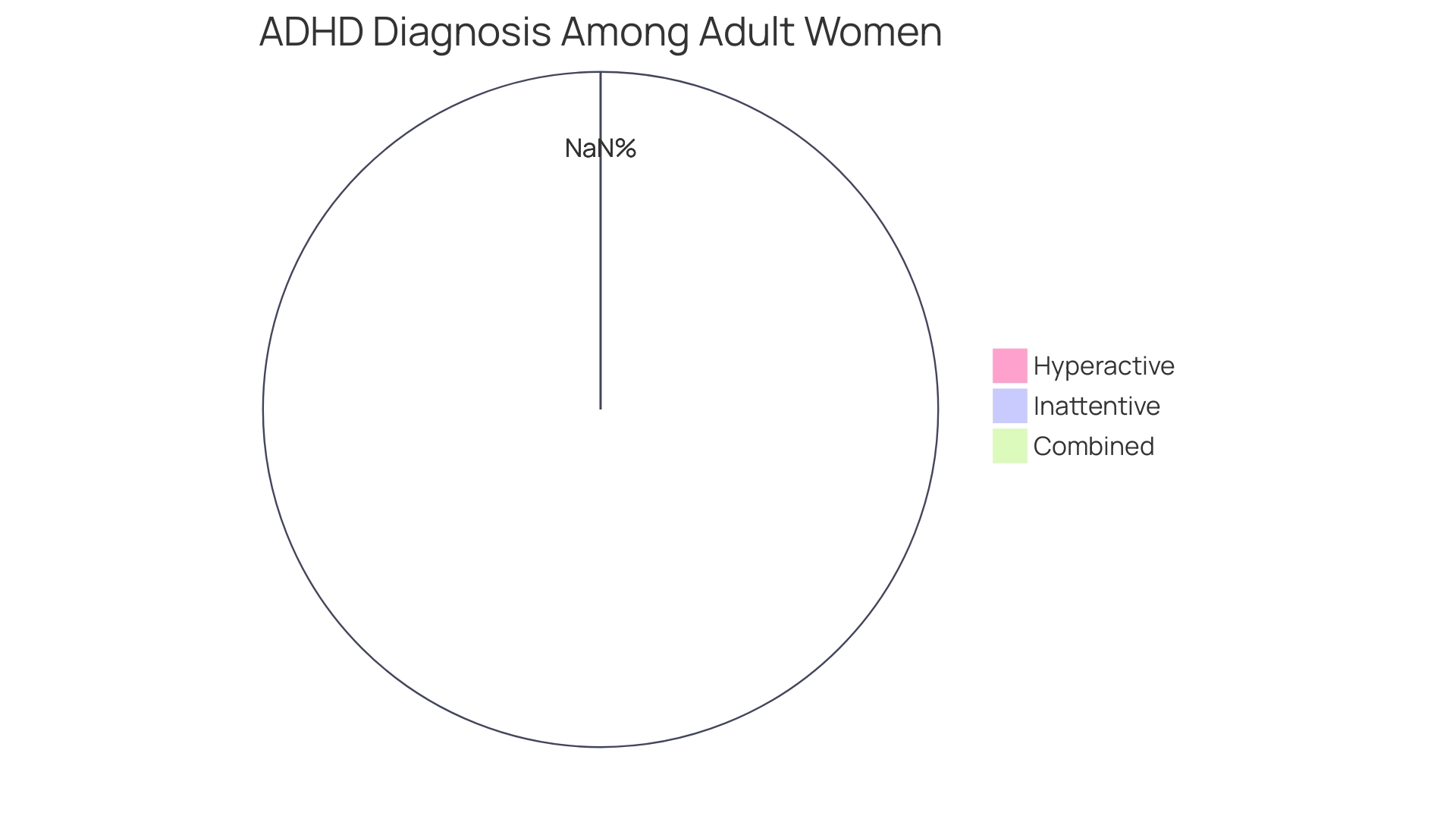
Conclusion
Recognizing the early signs of autism in toddlers is crucial for their development and overall well-being. Timely intervention has a profound impact on children with autism, enhancing their growth and opening up new avenues for support. Innovative technologies, such as AI-driven models, are emerging as invaluable tools in early detection, demonstrating high success rates in identifying children with autism.
However, disparities in the effectiveness of traditional screening methods have been noted, highlighting the need for more accurate and universally accessible screening tools.
Organizations like The Autism Community in Action (TACA) are working tirelessly to support families and advocate for the availability of early treatment options. By boosting public awareness and providing clear recommendations for support, we can make significant strides in supporting children with autism. The goal is to ensure that every child receives high-quality, individualized programming and the opportunity to be included in early childhood programs, setting them on a path to success from the start.
Understanding the social-communication challenges and communication differences in toddlers on the autism spectrum is crucial. By deepening our understanding of these difficulties, we can enhance social interactions and communication skills through personalized approaches and involving parents in the learning process.
Recognizing the behavioral patterns of toddlers is key in identifying the early signs of autism spectrum disorder (ASD). Repetitive behaviors are often indicators of ASD, and advancements in machine-learning models, like 'AutMedAI', highlight the potential for early detection and accurate diagnosis.
Monitoring key milestones and seeking professional evaluation when delays are observed is essential in ensuring early access to support and interventions. Early identification of ASD can lead to early intervention, significantly improving outcomes. Caregivers should stay informed about new developments in treatments and approaches, critically evaluating the available information.
By understanding the unique challenges and strengths of children with autism, we can create a supportive environment that enhances their growth and learning. Early diagnosis and intervention are vital in unlocking resources and improving outcomes, ultimately enhancing the quality of life for children with autism.




